Meet the Staff
Meet the Curators & Staff

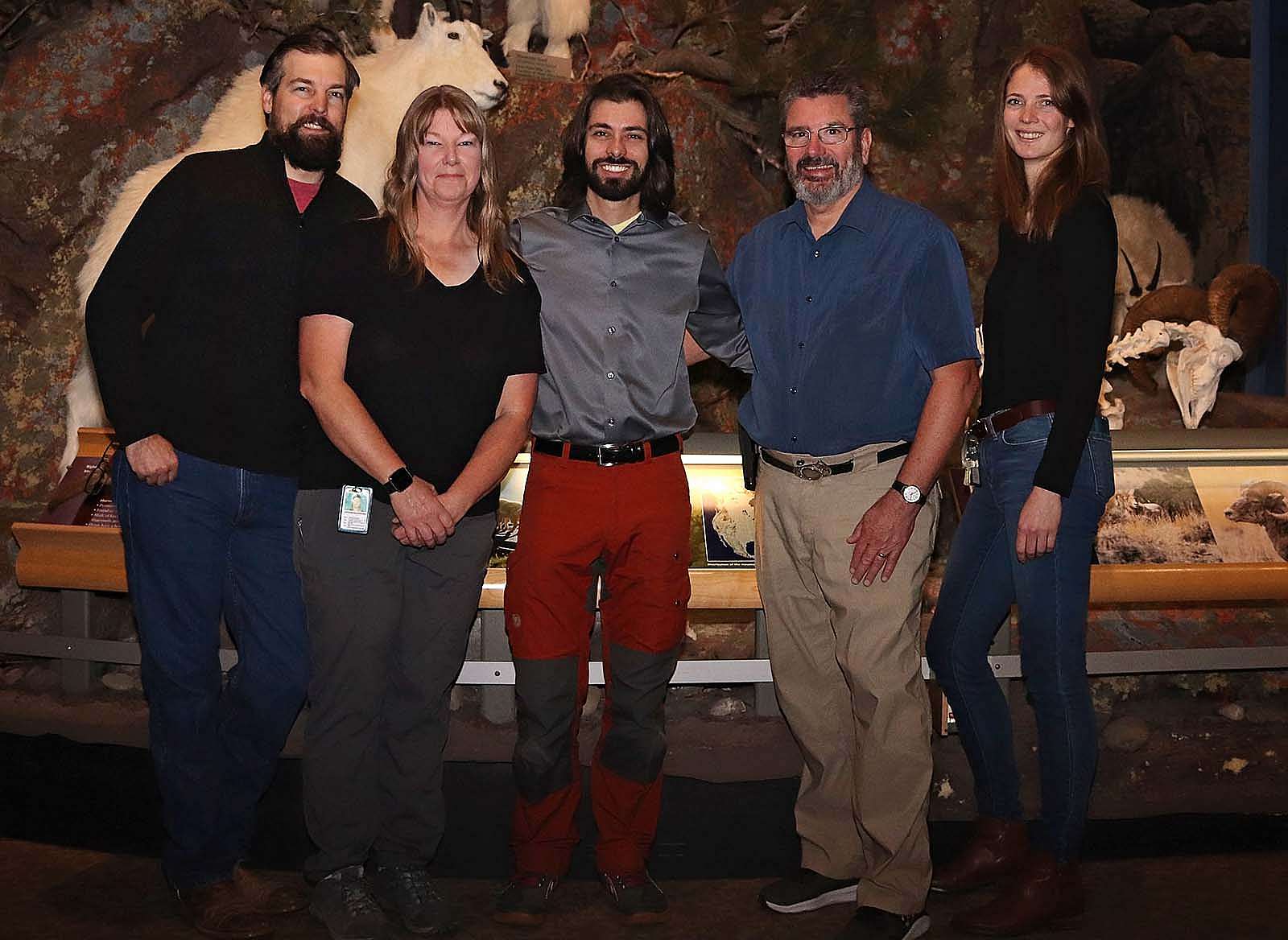
Meet the staff of the Draper Natural History Museum at the Buffalo Bill Center of the West (Left to Right): Draper Museum Raptor Experience Husbandry and Training Specialist Brandon Lewis; Draper Museum Raptor Experience Program Manager Melissa Hill; Curator Corey Anco; Assistant Curator Amy Phillips; and Research Assistant Larry Oliveria. Previous curators of the Draper Museum include Dr. Charles R. Preston and Nathan Doerr.
Corey Anco
Willis McDonald IV Curator of Natural Science
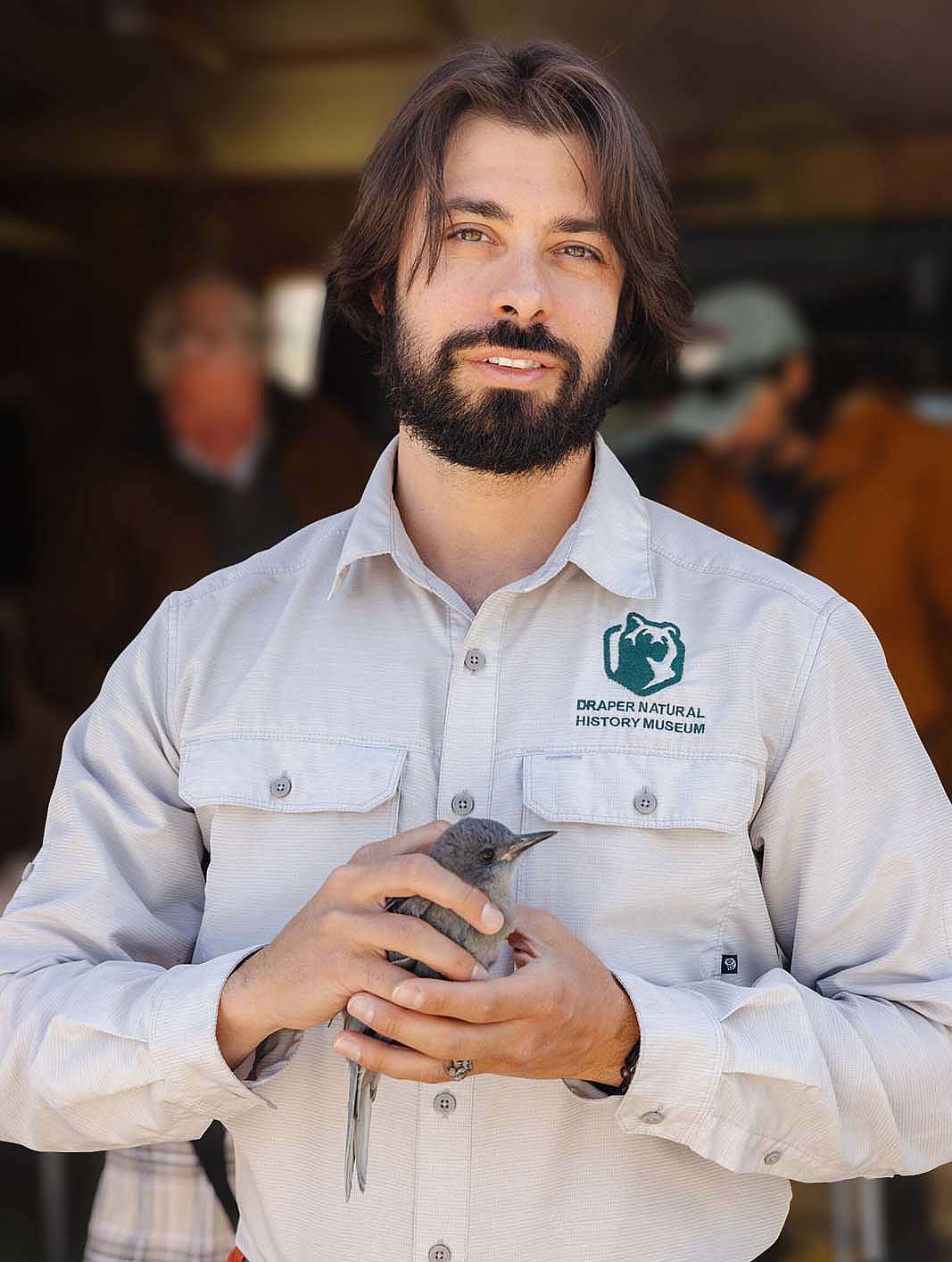
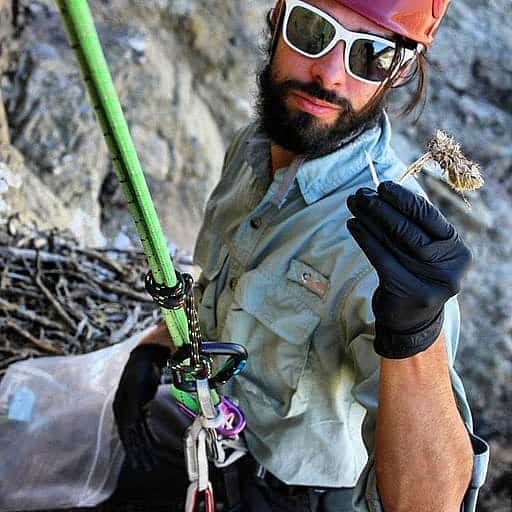
Corey Anco serves as Willis McDonald IV Curator of Natural Science at the Draper Natural History Museum, stepping into the role in November 2022 after working as Interim Curator earlier that year. Joining the Draper in 2017 as Assistant Curator, he built on experience with the U.S. Forest Service, U.S. Fish and Wildlife Service, U.S. Geological Survey, and National Geographic Society’s Big Cats Initiative. His fieldwork spans the tallgrass prairies of the Midwest, the tundra of Alaska’s Peninsula, the rainforests of Belize, and the urban ecosystems of New York City—settings that shaped his understanding of how wildlife responds to habitat change.
A Certified Interpretive Guide through the National Association for Interpretation, Anco teaches ecology and science communication to youth, high school, and university students. He earned a B.S. from Lewis University, an M.E.M. from Duke University, and an M.S. in Biology from Fordham University, along with certifications in geospatial analysis and wildlife chemical immobilization. His leopard genetics research at Fordham updated the global benchmark for African leopard diversity.
Anco focuses on ecosystem rewilding, partnership building, and responsible land stewardship. Beyond museum work, he cooks, hikes, splits wood, and plays guitar by the fire.
Selected Publications:
-
Anco C. et al. (2016). Historical mitochondrial diversity in African leopards (Panthera pardus). Mitochondrial DNA Part A. DOI: 10.1080/24701394.2017.1307973
-
Jacobson A.P. et al. (2016). Leopard (Panthera pardus) status, distribution, and research efforts across its range. PeerJ 4:e1974. DOI: 10.7717/peerj.1974
Amy Phillips
Curatorial Assistant
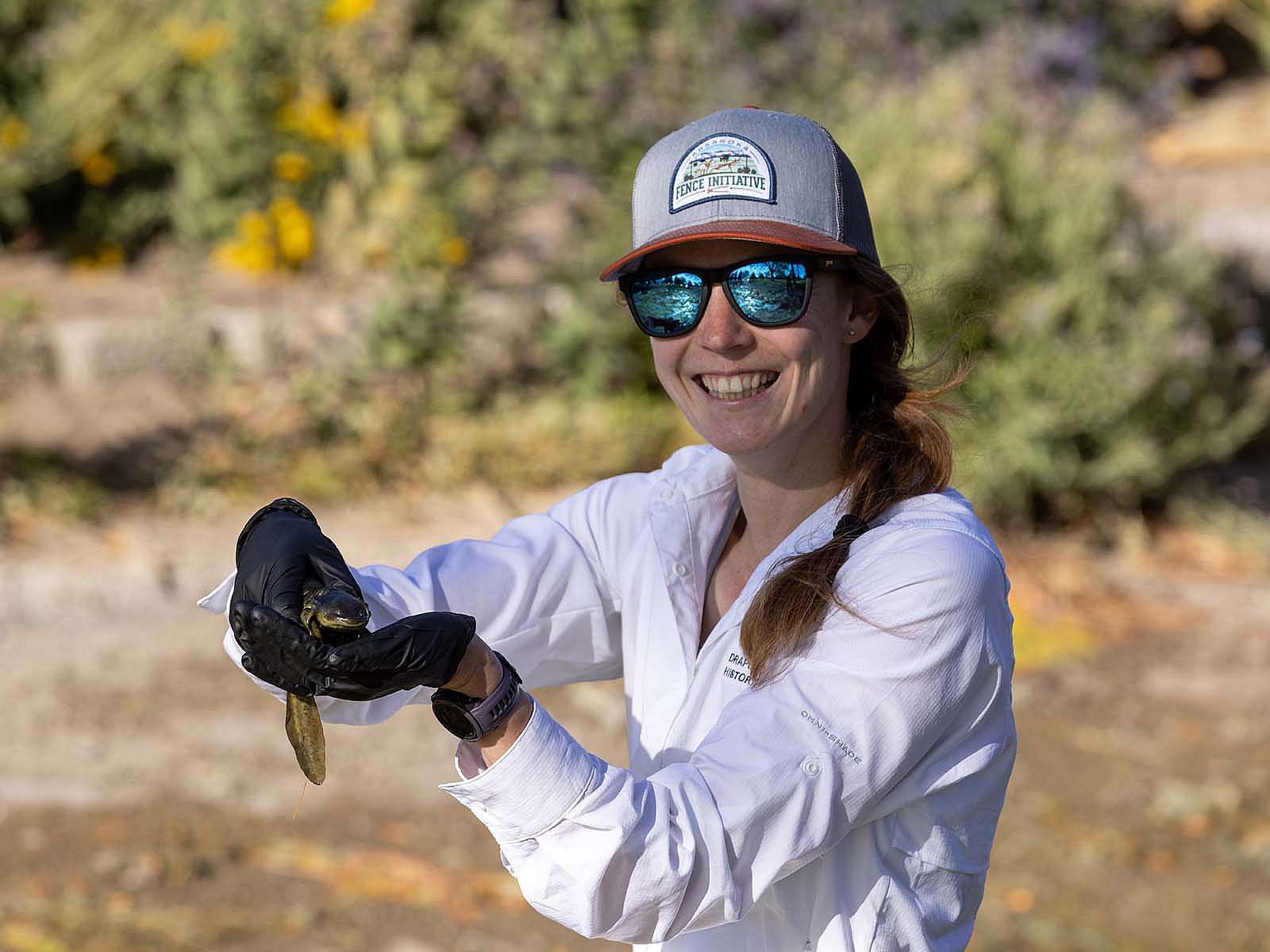
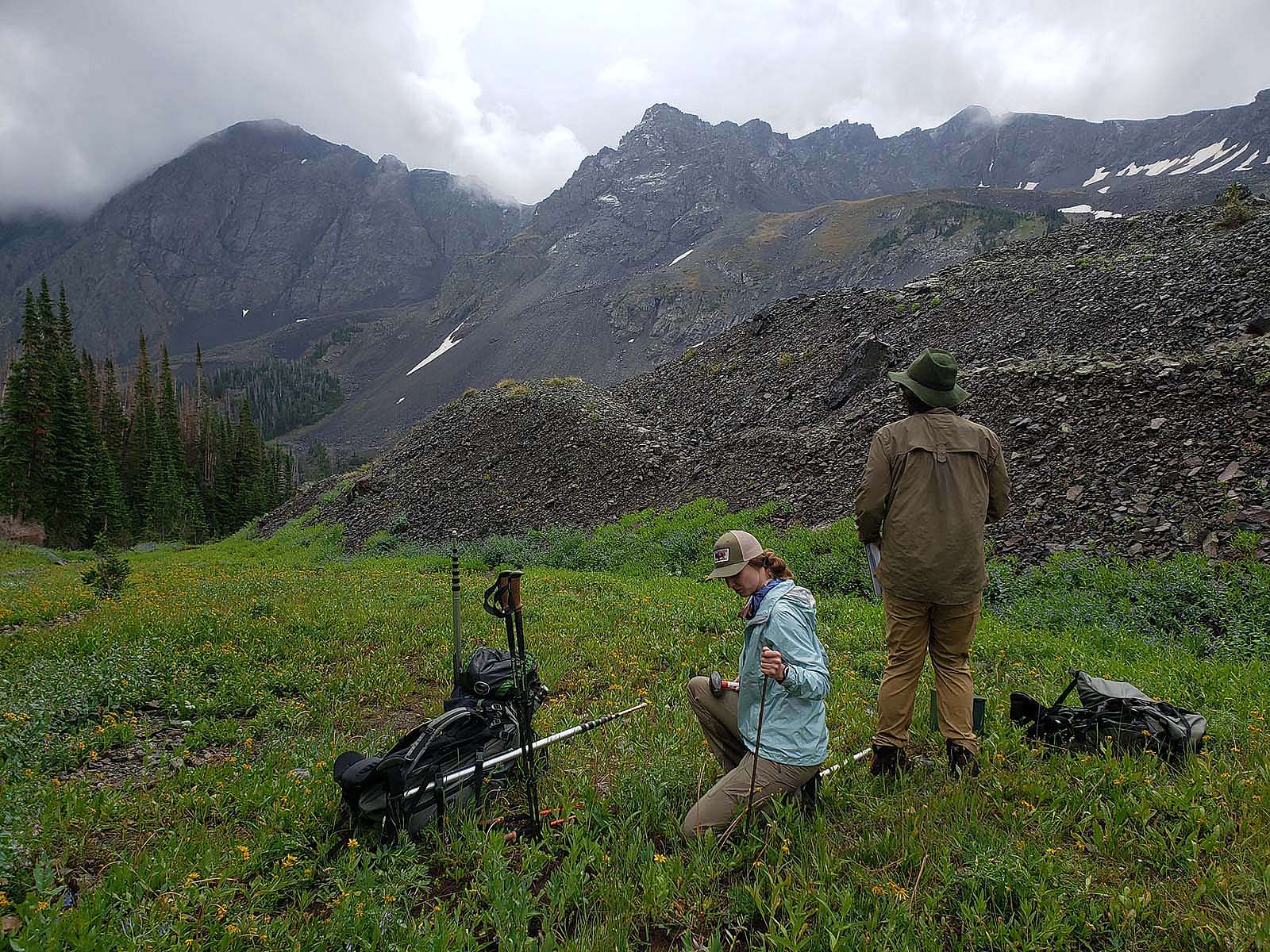
Amy Phillips serves as the Assistant Curator at the Draper Natural History Museum of the Buffalo Bill Center of the West in Cody, Wyoming. She investigates human-environment interactions in the past, applying archaeological methods and stable isotope analysis to address contemporary conservation challenges. Her interdisciplinary approach bridges cultural and natural history, offering insights into long-term ecological change.
As co-Principal Investigator of the Bison of the Bighorn Basin Project, Phillips leads research reconstructing the ecological history of bison in northwestern Wyoming. This work supports land and wildlife management strategies grounded in historical context.
Phillips earned her M.S. in Cultural Resource Management, Archaeology from St. Cloud State University. Her thesis used strontium isotope analysis to trace the harvest location of two wooden bows recovered from an ice patch in the Absaroka Mountains, shedding light on past mobility and land use.
At the Draper, she extends her research to plant and insect ecology, investigating shifts in phenology and pollinator communities over time. These projects deepen public understanding of biodiversity and climate change while contributing to the museum’s exhibits and educational outreach. Through her work, Phillips combines scientific research, fieldwork, and public engagement to highlight the connections between cultural heritage and environmental stewardship.
Melissa Hill
Live Raptor Program Manager
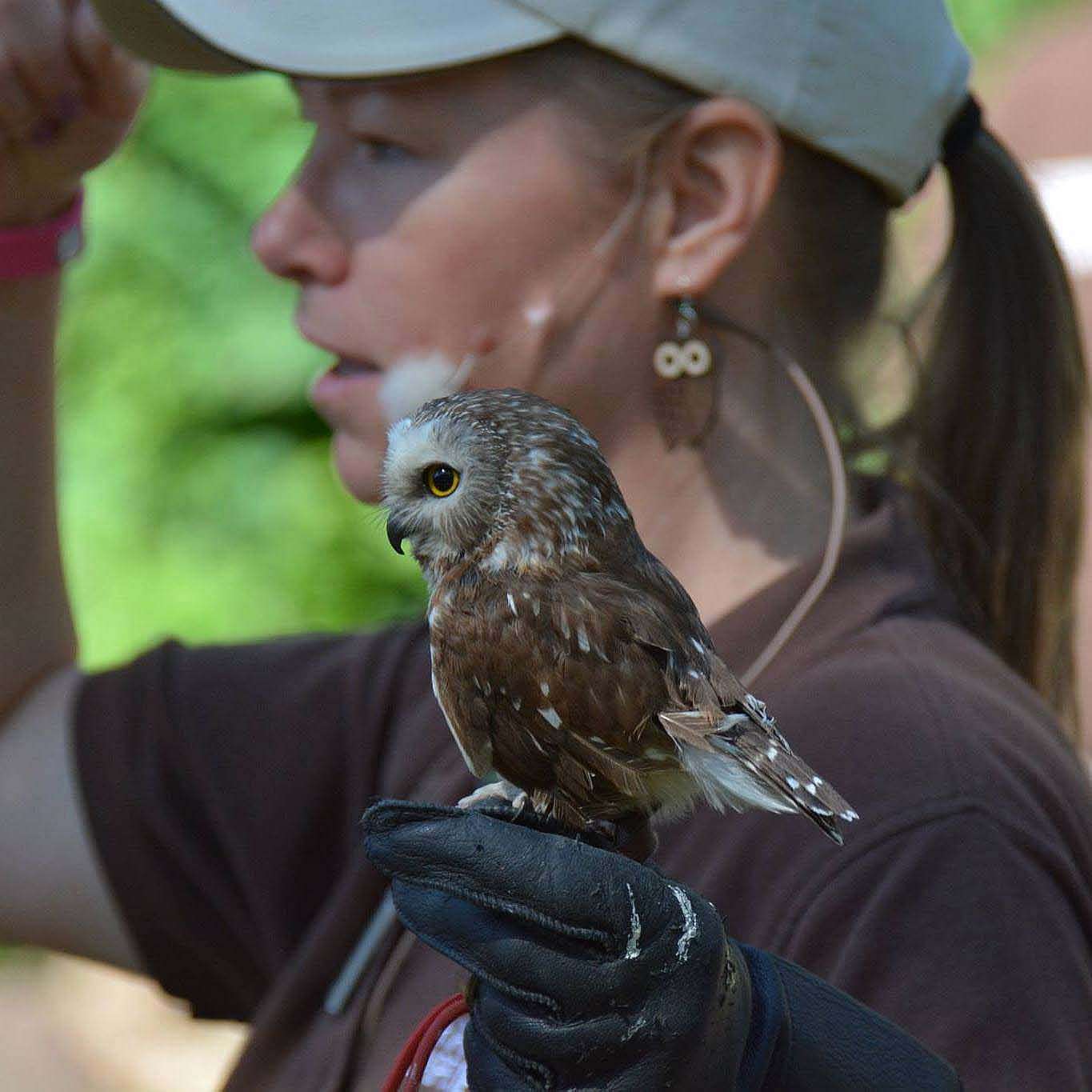
Melissa Hill joined the Draper Natural History Museum to create and lead the Draper Museum Raptor Experience, launched in 2011. The program features thirteen live birds of prey in public educational presentations at the Center. Each bird, non-releasable due to injury or behavioral limitations, came from rehabilitation centers or other educational facilities. Before joining the Draper, Melissa worked with HawkQuest, a Colorado nonprofit dedicated to raptor education, where she served as lead lecturer. She previously curated birds at Reptile Gardens in South Dakota, managing training, programs, and staff instruction. Her degree in Wildlife and Fisheries Biology and Management from the University of Wyoming supports her hands-on, science-based approach. A Certified Interpretive Guide through the National Association for Interpretation, Melissa also writes for both professional and youth audiences. In 2015, she published two children’s book series on raptors with Capstone Publishing in Minnesota.
Selected Publications:
-
Hill, Melissa. “Superheroes of Nature: Interpreting Turkey Vultures.” Legacy, vol. 30, no. 3, May/June 2019, pp. 18–20.
-
Hill, Melissa. “Interpretation in a Changing World.” The Flyer, vol. 23, no. 4, Fall 2016, pp. 3–5.
Brandon Lewis
Live Raptor Husbandry & Training Specialist
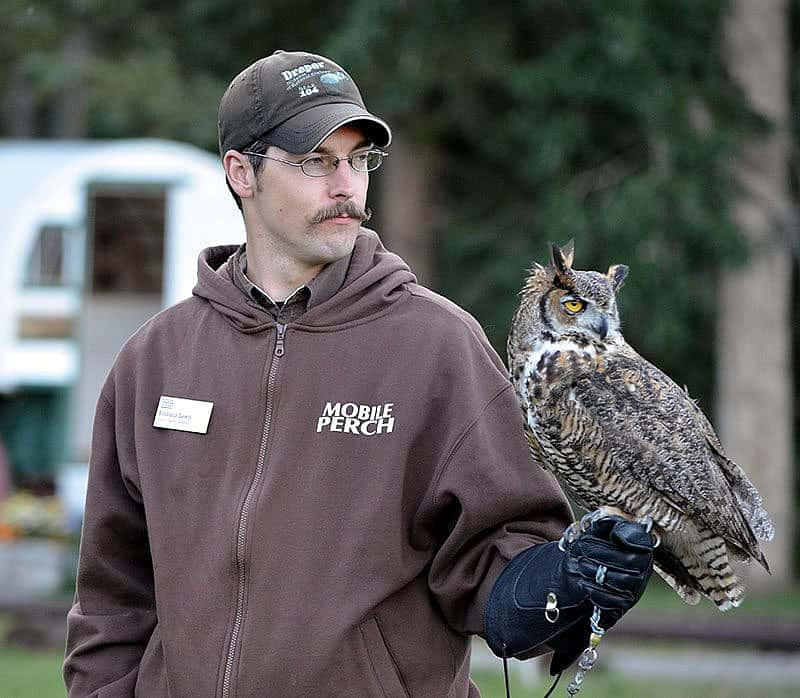
Brandon Lewis joined the Draper Museum’s staff in the spring of 2014 after interning for two summers with the Draper Museum Raptor Experience. His duties include presenting raptor education programs for the public when needed, training raptor program volunteers, developing and implementing an animal enrichment program, and caring for, feeding, cleaning up after, and training behaviors with the birds currently living at the Buffalo Bill Center of the West. Brandon has dual degrees in zoology and history from the University of Wyoming. In addition to working with birds of prey, he has a background in public education working as a Park Guide for the National Park Service, and has interpreted American history in period clothing since 2005. He is a Certified Interpretive Guide through the National Association for Interpretation.
Chloe Winkler
Raptor Experience Keeper/Presenter
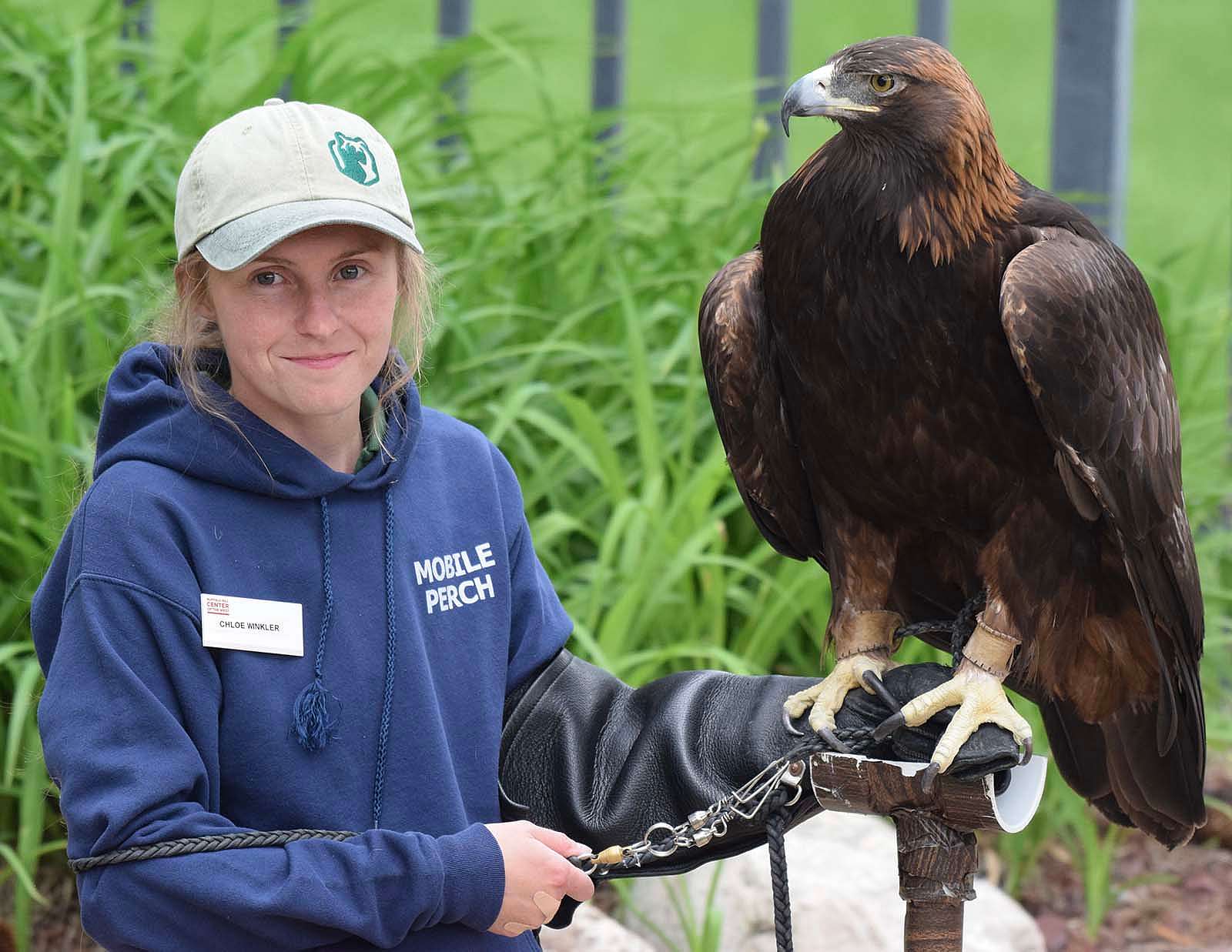
After earning a bachelor’s degree in Zoology from the University of Wyoming, Chloe Winkler began volunteering with the Draper Museum Raptor Experience. She served as a summer intern in 2021 and as a seasonal Raptor Keeper/Presenter in 2023 and 2024 before joining the Draper full time in fall 2024. Chloe’s background includes diverse lab and fieldwork experience. She contributed to avian disease studies on West Nile Virus and malaria, scouted Greater Sage-Grouse nesting sites for a potential captive breeding program, and supported doctoral research by creating animal hair scale casts. At the Draper lab, she assisted in specimen preparation and skeletal reconstruction. Chloe thrives on every aspect of working with birds of prey—from daily care and enrichment to live educational programs. Through storytelling and interactive presentations, she connects visitors from around the world with conservation themes, inspiring curiosity and respect for wildlife.
Larry Oliveria
Research Assistant
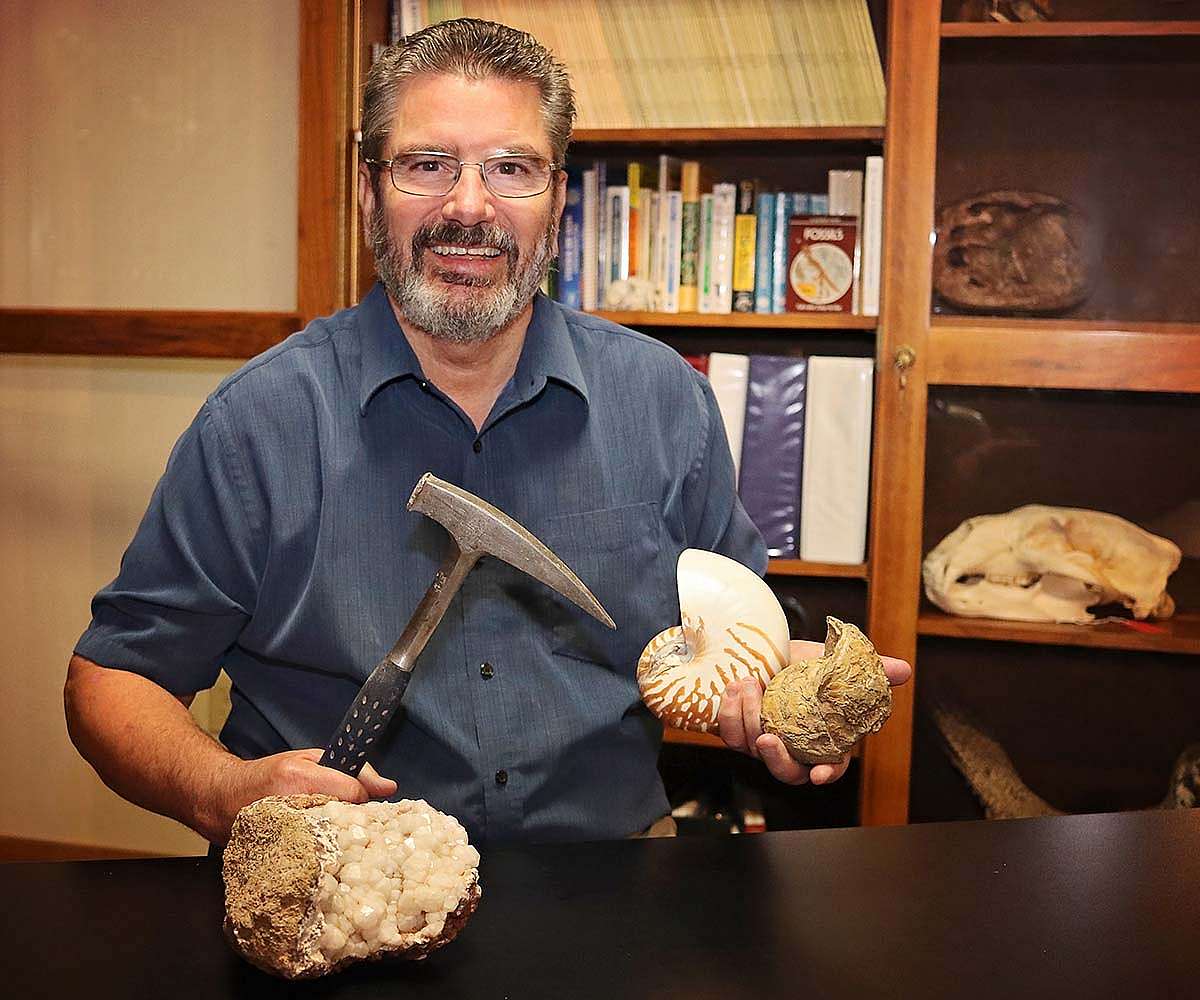
Larry Oliveria earned a Bachelor of Science in Biology with a Chemistry minor from the University of Santa Clara and completed his teaching credential in 1980. He taught high school science for two decades before retiring and remains active with Cody High School as a lifelong substitute teacher. Graduate coursework at San Jose State University deepened his knowledge of geology and paleontology. From 1991 to 1993, Larry lived in the United Kingdom, working as a Roman and Medieval archaeologist and serving as conservator of ancient metal finds for Cheshire County. He also volunteered at the Warrington City Museum of Natural and Cultural History. Training at the Black Hills Institute led to work in fossil preparation and molding for Paleo-Ed Resources and the Denver Museum of Nature and Science, where he completed the museum’s Certification Program in Paleontology in 2001. Since moving to Cody in 2013, Larry has led field excursions in local geology and paleontology, guided youth programs, and volunteered in the Draper Museum lab preparing mammal and bird specimens. A lifelong rock and fossil collector, he continues exploring the Bighorn Basin’s geologic wonders and sharing his passion through talks, tours, and the Cody 59ers Rock Club.
Charles R. Preston, PhD
Willis McDonald, IV Founding & Senior Curator Emeritus
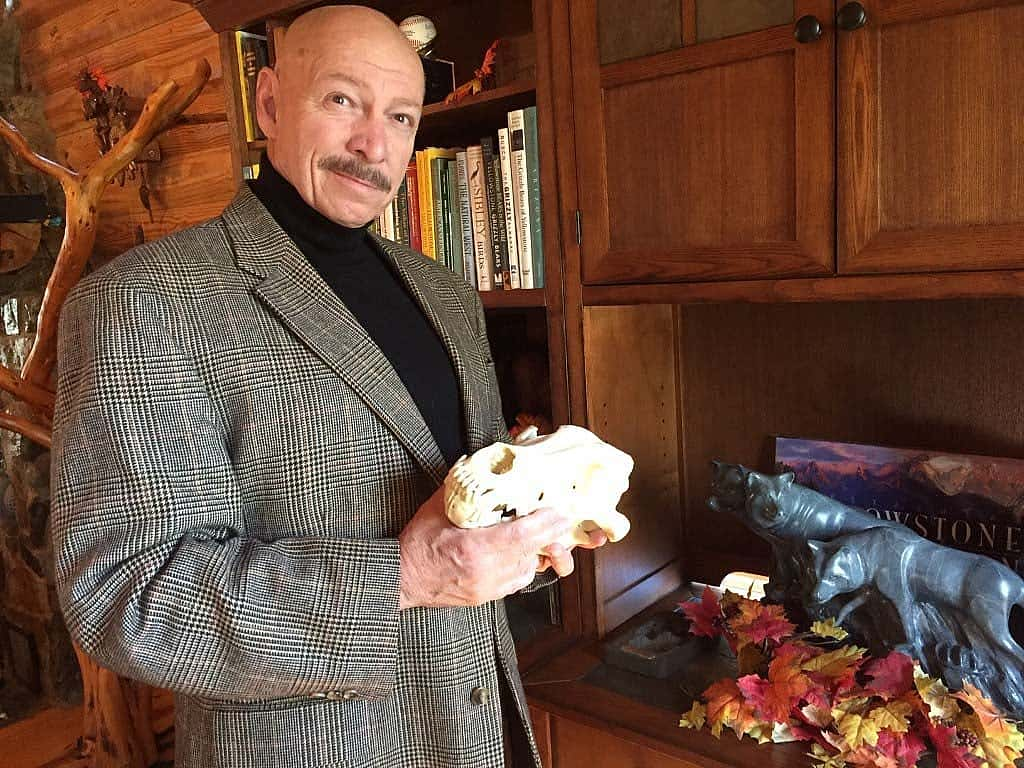
Dr. Charles R. Preston is the Willis McDonald, IV Founding and Senior Curator Emeritus at the Draper Natural History Museum at the Center of the West. He retired from the Center in 2018 after garnering international recognition for his “visionary” design and development of the Draper Museum and forging a groundbreaking partnership with the Prince Albert II of Monaco Foundation to foster biodiversity conservation in Greater Yellowstone. He established the Draper Museum Raptor Experience in 2011. He is widely recognized as a “leading thinker” concerning conservation issues in Greater Yellowstone.
Prior to his appointment to direct the Draper Museum’s creation in 1998, Preston was Chairman of the Department of Zoology at the Denver Museum of Nature and Science (1990–1998) and a tenured Associate Professor of Biology at the University of Arkansas, Little Rock (1982–1989). He holds or has held adjunct appointments in the Haub School for Environment and Natural Resources and Program in Ecology at the University of Wyoming; Biology and Environmental Science, University of Colorado (Boulder and Denver); Environmental Policy and Management, Denver University, and Biological Sciences, University of Arkansas, Fayetteville.
Since 2009 he has directed a long-term monitoring/research platform on Golden Eagle nesting ecology in Wyoming’s Bighorn Basin along the eastern margin of the Greater Yellowstone Ecosystem. He initiated the Golden Eagle nesting ecology program through the Draper Museum, but Preston continues to co-direct the study through his affiliation as Research Associate with Teton Raptor Center, in Wilson, Wyoming. A documentary was produced on the research in 2021–2022 that can be accessed here: Golden Eagles: Witnesses to a Changing West | PBS.
Preston and Penny, his wife and mate of 49 years, now split their time between Wapiti, Wyoming, and the Ozark Highlands of Arkansas, where Preston has partnered with a team to establish a new natural history museum and arboretum focused on Ozark ecology. He continues to write, lecture, and consult widely in his Emeritus role with the Draper Natural History Museum.
Representative publications (of >100):
Preston, C.R. and C. Anco. 2021. “The Bighorn Basin Golden Eagle Ecology Program: 2009–2021.” Unpublished report prepared for the Draper Natural History Museum, Buffalo Bill Center of the West, Cody, WY.
Dudek, B.M., J. Barnes, P.H. Bloom, J. Papp, J. Buck, D. Leal, R. Gerhold, K.E. Purple, K.V. Jacobson, M.N. Kochert, C.R. Preston, S. Slater, C. Vennum, J.W. Watson, and J.A. Heath. 2018. “Prevalence and risk factors of Trichomonas gallinae in Golden Eagle nestlings in western North America.” Journal of Wildlife Diseases 54:755-764. https://doi.org/10.7589/2017-11-271
Preston, C.R., R.E. Jones, and N.S. Horton. 2017. “Golden Eagle diet breadth and reproduction in relation to fluctuations in primary prey abundance in Wyoming’s Bighorn Basin.” Journal of Raptor Research 51:334-346. http://www.bioone.org/doi/full/10.3356/JRR-16-39.1
Seton, E.T., (J. Johnston, and C.R. Preston, Eds.). 2015. Wahb: The Biography of a Grizzly. University of Oklahoma Press, Norman, OK (National Outdoor Book Award Winner).
Preston, C.R. 2013. “Fighting nature-deficit disorder: the role of natural history museums in the 21st century.” Informal Learning Review 119 (March–April): 1–12.
Preston, C.R., J. Robbins, S. Kraft, and L. Whittlesly. 2008. Spectacular Yellowstone and Grand Teton National Parks. Rizzoli Publications USA, New York, NY.